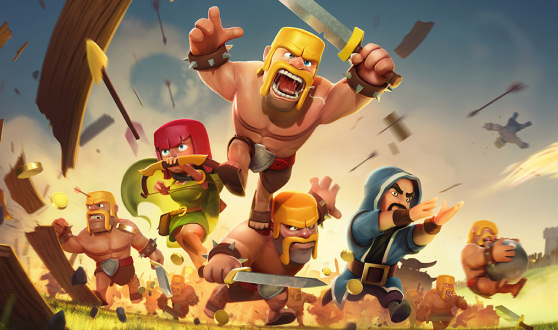Masanari Arai is CEO of Kii Corporation
Japan is now the best-monetized market for iOS and Android games in the world (as VentureBeat recently reported), eclipsing even the United States. Clearly, this market has great potential for Western game developers — but so far, few of them have had much success there.
Indeed, according to App Annie’s 2013 report, the local products dominate the Japanese market Nine of the top 10 most downloaded iOS/Android games were made in Japan, with Temple Run 2 the lone Western entry; worse, none of Japan’s 10 best monetized games are from the West.
Many of my Western colleagues assume this deficit is due to language and cultural barriers and the country’s historically strong video game industry. And while those are certainly factors, other variables are at play — and Western developers need to better address these to greatly increase their odds of succeeding in Japan.
Understanding the Japanese smartphone ecosystem
According to research firm MMRI, in late 2013, smartphones represented 42.8 percent of the total 118 million mobile phones in Japan, with iOS taking 35.6 percent of that segment, and Android dominating with 63 percent. This is not too dissimilar to other markets, but below these numbers, Japanese smartphone owners are quite unique:
- In-app payments predominate: Japanese gamers are much more likely to make in-app payments in their favorite games than their counterparts are in the West. I estimate that 20 percent of mobile social gamers in Japan make in-app payments, while the figure among Western mobile gamers is generally under 5 percent. This is largely because most Japanese first began using the Web on their phones, not a PC, and Japan’s top mobile carrier Docomo launched Internet access as a ¥300 Yen (about $3) monthly purchase option. So unlike most Westerners, Japanese are quite comfortable paying for premium content on and for their phones. Consequently, I’d estimate more than 90 percent of mobile gaming revenue in Japan derives from in-app payments. (Paid downloads in Japan, by contrast, probably represents less than 5 percent revenue of the market.)
- Social networks are deeply integrated with mobile games: Japanese mobile games began emerging around 2006, based around feature phones, and these games were largely integrated with gamer social networks. Two of the leading networks, DeNa and Gree, first began on the Web, and integrated friend invites into its games. In the smartphone era, new entrants have emerged, led by Line, which now has about 150 million users across Asia. It recently added games (about 10) to its network. (KakaoTalk, originally from Korea, has also gained a foothold in Japan.)
For Western developers, each of these insights strongly suggest several key points to publishing games in Japan.
Focus on social-network based integration, promotion, and customer support
Because Japan’s local social networks are so large and essential to mobile games, it’s crucial that Western developers integrate them into their titles. As with Twitter and Facebook worldwide, Japan’s social networks are a powerful way of driving organic viral growth. Japanese players particularly enjoy competing in mobile games with their friends, so adding an SNS-integrated leaderboard is an excellent way to engagement and encourage organic promotion. For similar reasons, aggressive customer support is also essential: In Japan, when a mobile game is buggy or frustrating, people will quickly communicate its failings across the country’s social networks. If you don’t immediately quell user anger, retention rates will rapidly drop.
Social networks are also important for driving monetization in Japan, because unlike the West, Japanese gamers are quite willing to make an IAP which will give them an edge against their competitors. Also unlike the West, Japanese players also enjoy cooperative IAPs — virtual items friends can buy together to enhance their efforts as a team.
Which brings me to my next point:
Use analytics to identify and serve several paying-customer types
While Western games tend to earn the most revenue from their most competitive players, Japanese developers generate higher average revenue per user (ARPU) by catering to other player types: In addition to the Achiever, this include the categories I identify as Explorer, Socializer, and Killer. Each has a different style of play and motive for monetization, and analytics are indispensable for identifying each. (For instance, a player who invites a lot of friends to join a game likely fits in the Socializer category and is probably more inclined to purchase player-to-player gifts.) Analytics can also track how successful a specific IAP item is and help you adjust price and functionality accordingly. As you might imagine, this strategy also requires offering a wide array of different IAPs for different categories of player, so deploying these via cloud is also highly recommended.
As you probably noted already, both of these points assume your game will not only be localized for Japanese players but have the backing of Japanese-fluent analytics, social media marketing, and customer support staff. And this takes me to my final point:
Work with local publishing/deployment partners
While most Western games fail to gain traction in Japan, it’s important to note the exceptions: At the moment, the top three foreign applications in Japan are Clash of Clans, Candy Crush Saga, and Hay Day, and their success in Japan should be instructive to other developers: King.com is the first Western publisher to advertise on Japanese television, promoting Candy Crush Saga with a spot starring a well-known local actress. The Japanese launch of Clash of Clans and Hay Day (from Finnish company Supercell) was supported by investment and resources from Japanese telecom giant Softbank and GungHo, one of Japan’s top five mobile game companies. (The other four: COLOPL, Line, Namco Bandai, and Sega.) Most Western developers will not have the money for a Japan-wide TV spot like King, so following Supercell’s lead and working with local partners is probably the best route. Ideally, this also includes a partnership with local handset carriers, who can assist with promotion and monetization; and Japan-based cloud services, for deployment, user management, and analytics.
To be sure, King.com and Supercell are already worldwide market leaders in mobile gaming, and they are best positioned to partner with Japanese companies. But the opportunity is too great for other Western developers to ignore. And thanks to Japan’s long history as a game-centric nation, I believe they will find many ready partners who, despite any communication barriers, speak the same language of gaming.
 Masanari Arai is CEO of Kii Corporation, a full-stack mobile backend to accelerate iOS, Android, HTML5 and Unity app development. Kii also enables developers to distribute their apps to the Asian market.
Masanari Arai is CEO of Kii Corporation, a full-stack mobile backend to accelerate iOS, Android, HTML5 and Unity app development. Kii also enables developers to distribute their apps to the Asian market.
VentureBeat's mission is to be a digital town square for technical decision-makers to gain knowledge about transformative enterprise technology and transact. Learn More

